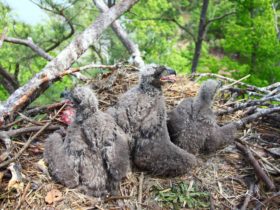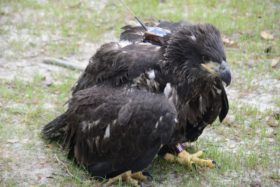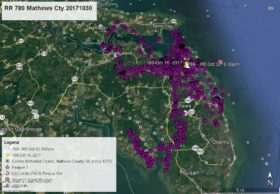Azalea in Chowan County, NC
Big Chick #1
March 28, 2011Camellia at Lake Joyce in Virginia Beach
March 29, 2011
When we last checked in on Azalea it appeared she was on her way back to the North Carolina State Tidewater Research Station (TRS), and she was. But, first she stopped off at a small catfish pond north of Roper,NC and spent the night of Mar 25. The next morning she did as expected and returned to TRS and the much larger private catfish farm. Also as expected she stayed overnight in a communal roost. She remained at TRS until the afternoon of Mar 28 when she flew across Albemarle Sound to Camden County. At 7:00pm yesterday she was near Drummond Point east of the Rt 94/37 bridge across Albemarle Sound – white data point.




1 Comment
lol, Azalea is going to grow catfish whiskers if she eats many more catfish!!